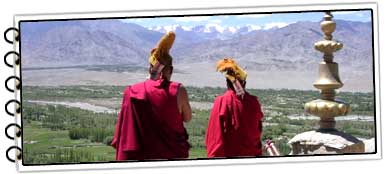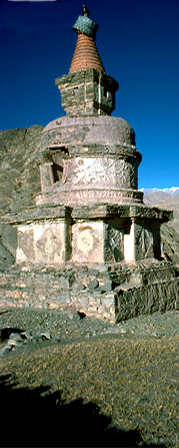Home - Ladakh Cultural Tour
Ladakh Cultural Tour
Ladakh Festival
The Ladakh Festival is a major event organized every year by the Kashmir and Jammu Tourism Department in collaboration with the local communities and the district government administrations. The festival begins with a spectacular procession in which various cultural troupes and village contingents participate in full ceremonial costumes, singing and performing various types of colorful dances to the tune of the traditional orchestra. Thousands of traditionally attired men and women line the route of the procession, adding to the carnival atmosphere. At the polo ground, where the procession terminates, the participants break into a variety of folk and popular dances, presenting the best samples of the region's performing arts. Among the regular programs, including a fortnight of musical concerts, lama dances and folk ceremonies, the most colorful and exciting are the archery events. Designed with an objective to revive and promote the richness, depth and pageantry of Ladakh's centuries-old culture for worldwide appreciation and enjoyment, the Ladakh Festival offers a unique opportunity to witness many of Ladakh’s traditions and folk heritage in a very short time and without having to traverse to its often formidable outlying areas. Our tour brings you to experience the best of it. Our tour's daily program is not finalized until Kashmir and Jammu Tourism Department publishes the schedule of events, released usually about two weeks before the start of the festival.
PEOPLE RELIGION AND CULTURE
The traveller from India will look in vain for similarities between the land and people he has left and those he encounters in Ladakh. The faces and physique of the Ladakhis, and the clothes they wear , are more akin to those of Tibet and Central Asia than of India. The original population may have been dards, an Indo -Aryan race from down the Indus. But Immigration from Tibet, perhaps the millennium or so ago, largely overwhelmed the culture of the Dards and Obliterated their racial characteristics. In Eastern and central Ladakh, todays population seems to be mostly of Tibetan origin. Further west, in and around Kargil, there is much in the people's appearance that suggests a mixed origin.
Buddhism reached Tibet from India via Ladakh, and there are ancient Buddist rock engravings all over the region, even in areas like Dras and the lower Suru Valley which today are inhabited by an exclusively Muslim population. Islam too came from the west. A peaceful penetration of the Shia sect spearheaded by missionaries, its success was guaranteed by the early conversion of the sub-rulers of Dras, Kargil and the Suru Valley.
The demeanor of the people is effected by their religion, especially among the women. Among the Buddhists, as also the Muslims of the Leh areas, women not only work in the house and field, but also do business and interact freely with men other than their own relations. The Natural joie -de-vivre of the Ladakhis is given free rein by the ancient traditions of the region. Monastic and other religious festivals, many of which fall in winter, provide the excuse for convivial gatherings. Summer pastimes all over the region are archery and polo. Among the Buddhists , these often develop into open air parties accompanied by dance and song, at which chang, the local brew made from fermented barley, flows freely.
Of the secular culture, the most important element is the rich oral literature of songs and poems for every occasion, as well as local versions of the Kesar Saga, the Tibetan national epic.



